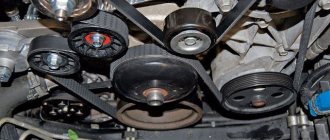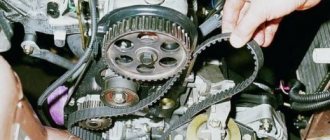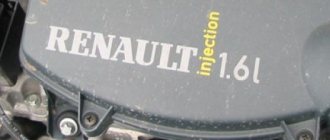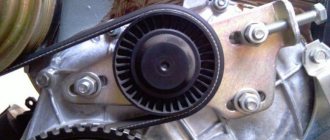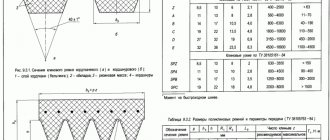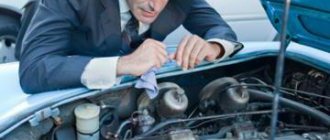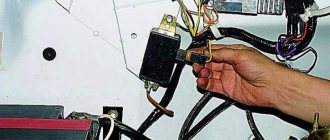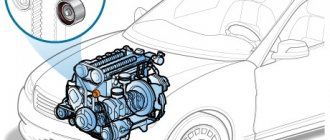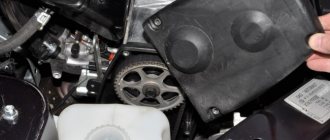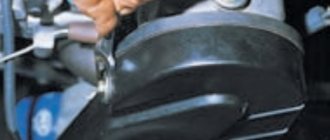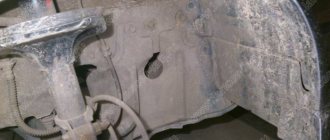Many people are familiar with the situation when a car starting up nearby suddenly emits a strained and nasty whistle, attracting the attention of all passers-by. It seems that a little more and the car will either fly vertically upward, or something very terrible will happen to it.
Meanwhile, everything is banally simple. This is how the alternator belt whistles. And if such a whistle appears, it will not be able to go away on its own. It is necessary to carry out diagnostics, determine the cause and replace worn parts.
It happens that the belt makes sounds during a cold start, and then, after the engine warms up, it returns to normal. In this case, they say that the alternator belt whistles when cold.
And it happens that the whistle does not stop even after the engine has been running for a long time. In this case, we are talking about the belt whistling under load.
Causes of alternator belt whistling when cold
Unpleasant sounds can occur due to 2 things:
- starting the car engine after prolonged inactivity;
- starting the engine at sub-zero temperatures.
The main reason why a belt whistles when cold is belt slippage. This may be due to a number of factors:
- The alternator belt is not tensioned enough. The belt transmitting torque from the crankshaft is simply not able to accelerate the generator pulley and systematically slips on it;
- The generator bearing grease has thickened. This happens at low temperatures and an incorrectly selected lubrication option. The generator pulley is difficult to unwind, but then, having reached the required speed, it does not delay the rotation of the belt;
- the belt is too worn;
- the generator belt or pulley is contaminated with oil, gasoline, antifreeze and other substances;
- belt of poor quality;
- There was a problem with the generator, resulting in a jammed pulley.
What is a generator belt?
The generator belt is installed to transmit torque to the generator rotor from the crankshaft. Due to this, electricity is generated, which is subsequently distributed among all consumers and for recharging the battery. To operate the belt, pulleys are used, and it is on them that the belt is put on to connect to the crankshaft.
In addition, a feature of the belt is its quiet operation. High-quality products can withstand heavy loads for a long time, while constantly smoothing out jerks and shocks. The belt sizes are small. For this reason, they do not take up much space. However, this part simultaneously sets in motion important structural components in the car, including the power steering pump, water pump, air conditioning and the generator itself.
If the alternator belt breaks in the car, all of the above components will stop working, the battery will be discharged, which will be indicated to the driver on the instrument panel by the battery light coming on.
Diagnosis of the cause of belt whistling
An inspection is necessary to try to determine the cause. To do this you should:
- Find the alternator belt and check it for cracks and the integrity of the tracks. The belt should not be worn out or frayed;
- Check belt tension. If the belt tension is weak, it should be strengthened using the Add to Dictionary roller or an adjusting bolt. An over-tensioned belt also causes noise and wears out the alternator and crankshaft parts faster;
- Check contact parts for cleanliness. There should be no dirt on them. The better the adhesion of the belt to the pulleys, the better the torque is transmitted and the higher the efficiency.
This is the initial necessary inspection. However, it happens that it does not give results. Then the reason should be sought deeper:
- Check the condition of the generator by trying to unscrew the pulley manually. If it rotates with difficulty, in fits and starts, or does not rotate at all, then, most likely, the generator bearing has failed and will need to be replaced;
- Check the belt tensioner pulley. It should turn easily and have no play. In case of any non-compliance with this requirement, it must be replaced;
- check the parallelism of the pulleys. They should be on the same line, without bending or other deformations.
All of these factors are the main causes of whistling when the belt rotates. However, this does not eliminate the possibility of the presence of secondary indirect causes. The main thing is to listen to the operation of your car and notice the slightest deviations from normal operation.
Why does the driver hear a whistle?
When the power unit operates in a car, the belt, along with other drive belts, experiences maximum loads.
Most of the drive belts installed in the machine have a wedge shape, which provides a greater frictional force in the place where the part contacts the pulleys. Such elements even have appropriate names - V-belts.
These same products, but having several paths at once, called streams, are called polywedges.
Generator belts can be with or without teeth. It is generally accepted that products with teeth have a longer service life, since they wear out and slip less often.
So why is there a whistle? In 95% of situations, the manifestation of an unpleasant whistling sound occurs due to the friction of the belt on the pulley if slippage occurs. It turns out that when the belt is unable to turn the pulley, then it slips. This action is accompanied by a sound resembling a whistle.
The motorist should not look for the cause of the sound, but for faults that cause the belt to slip.
There may be several of them:
- Weak and, conversely, very tight tension of the generator belt. Over time, the belt may stretch. The main reason for this is wear and tear of the lower part of the part. The car owner will only need to tighten the connection point. However, it is important to remember not to tighten it too much. In the longest section, the blade should have a stroke in the range of 8 - 10 millimeters. A belt that is too tight can also cause a squealing noise. It is no secret that extremely tight tension does not allow the pulleys to rotate normally. This situation often occurs in winter. The squeak disappears from the moment the engine reaches operating temperature and the belt takes its previous shape.
- Poor quality or temporary wear of the belt. Often, the material used in the production of the belt itself is not the same material applied to the outside of the product from Chinese manufacturers. When the top layer wears, the belt makes a squeaking sound. If the wear is too great, then even the next tension will not help eliminate the problem with the belt whistling. When cracks appear on the product or traces of major destruction can be visually detected, the problem can be corrected by replacement. There is no point in delaying this issue, since such a belt can break at any time.
- Contact with the pulley or belt of technical fluid used in the operation of the machine, for example, oil, washer fluid and even plain water. Problems with whistling appear most often due to contact with engine oil. The belt loses its previous grip and slips with the appearance of a characteristic sound.
- Malfunction of the tension roller or generator bearing. A technical problem with the bearing can cause an unpleasant sound emitted by the hanging belt. The owner of the car will only need to replace the bearing. This structural unit also has special tension rollers. This part is a type of bearing that can begin to seize over time. Because of this problem, the movement of the belt drive is disrupted, the belt rubs heavily against the pulley. In this situation, the belt will show signs of severe wear. The car owner must inspect the mechanism, remove the belt and check the play of the rollers.
- Axle mismatch between pulleys. The appearance of a nasty whistle may be due to misalignment of the line between the two pulleys. The pulleys must be positioned strictly on the same axis, and even a slight slope can cause a whistle.
This is interesting: List of works during maintenance 1 (mileage 15,000)
There are several pulleys in a car. The first is located on the crankshaft, and the second on the generator. With constant use of the car, the pulleys wear out. A small pulley is installed on the generator; on the crankshaft, on the contrary, the largest one is installed. Most of the load will go on the small pulley. Some automakers make a small alternator pulley from not the most durable materials. Therefore, wear of the teeth on this part is a matter of time. In addition, situations often occur when damage occurs on the track itself, for example, after an impact.
In any case, the car owner will need diagnostics and replacement of damaged parts.
You will also be interested in:
- How to check the generator voltage regulator
- Signs of a faulty generator diode bridge
- How to check the generator without installing it on the car
How to eliminate belt squealing
Having carried out diagnostics and knowing exactly the cause of the sounds, you can easily make repairs. Let's list what is done first:
- Purchase and installation of a new alternator belt. It is important to choose the original. Purchasing Chinese analogues of dubious quality leads to rapid replacement;
- Cleaning the belt and adjacent elements from dirt;
- Tension or loosening of the alternator belt. This is done using a roller or adjusting bolts;
- Replacing the generator bearing grease;
- Replacing the generator bearing;
- Replacing the tension roller;
- Replacing the generator pulley;
- Generator repair.
Alternator belt whistles when under load
If the alternator belt whistles not only when the engine starts, but also when the car is running, it is not at all necessary to change it immediately. Carry out the following procedures to correct the situation:
Remove the alternator belt completely from the car and inspect it for wear;
- Next, make sure that the belt is clean - there are no automotive fluids on it, since even one drop of oil or antifreeze will cause it to whistle during operation;
- Check how well the generator pulley rotates;
- Reinstall the belt and make sure it is tensioned correctly;
- Try starting the engine again and listening to the car for a whistle.
We eliminate the whistling temporarily with auto chemicals
It is worth mentioning special air conditioners and belt tensioners separately. In the cold season they are very effective. The active substances included in their composition soften the belts and make them more elastic, thereby increasing adhesion to the pulleys.
If the belt looks good enough and the alternator rotor is turning, the first step is to use a conditioner spray. It may simply be that the belt hardened at a low temperature.
Did you like the article?
Share the link with your friends on social networks:
We also have interesting e-mail newsletters, subscribe ! (once a week)
Varieties of whistling
Belt wear
It is customary to distinguish whistling by the nature of its occurrence. For example, a whistle may appear only when it is cold, then disappear. Therefore, it is equally important to know how the alternator belt whistles.
Whistling when cold is a common headache for Russian car owners. There are several reasons.
- The grease for the generator bearings is incorrectly selected. Because of this, in cold weather the composition becomes denser, the pulley cannot easily rotate the rotor. Everything goes away as soon as the engine warms up and the lubricant “defrosts”. The solution to this problem is simple - replace the anti-adhesive with a composition that is more cold-resistant.
- Weak belt tension. An engine that is simply not able to start working dynamically “when cold” requires time to warm up. During this period, a weakly tensioned belt lacks the strength to “accelerate” on the pulleys. It slips and whistles, but only until the motor begins to rotate quickly and evenly.
- The pulley itself is jammed. This also only happens “when cold” until the car parts are properly heated. You can check whether the pulley is the cause of the whistling yourself. You need to turn the generator pulley by hand, first taking off the belt. If the pulley rotates slowly or cannot be turned at all, serious repairs and even replacement are needed.
Article on the topic: How to register for the traffic police exam through government services?
Another option for whistling is noise that occurs only when the engine is under load. This type of whistling is mostly caused by weak belt tension.
Belt whistling: reasons
| CAUSES OF WHISTLING | WHY IS IT WHISTLING? | WHAT TO DO |
| Generator belt | It becomes unusable due to natural wear and tear. Due to grains of sand that fell on the surface of this belt and ate into the grooves. | Check the condition of the belt; if there are cracks on its surface, stuck grains of sand are visible, or threads are sticking out, replace the generator belt immediately. |
| Poor tension | Often, after replacing the alternator belt, it is not tensioned well, resulting in the alternator belt whistling during loads, as well as in wet weather. | Tighten the belt. |
| Pulley or pulleys | If there is wear on the pulleys or they have been changed (installation of non-original pulleys is fraught with whistling and other problems), the appearance of whistling is quite understandable. A loose fit of the poly V-belt to the grooves on the pulley impairs adhesion, as a result the generator belt begins to slip and whistle. | Replacement or repair of pulley(s) |
| Liquid got on the belt | Often the generator belt whistles due to liquid (antifreeze, oil, fuel, etc.) getting on its working surface. | Check for oil and coolant leaks. Eliminate them. Replace the belt. |
| Generator load | Due to the high consumption of electric current, the load on the generator increases, therefore, the resistance of the magnetic field to stator rotation increases. As a result, the generator seems to “slow down” the belt, resulting in surface friction, which is expressed in the form of an unpleasant whistle. | Turn off unnecessary electrical consumers. Check the generator and the entire power circuit. |
| The generator bearing or tension roller is faulty | You can check whether there is play in the generator bearing only by removing it, or try to shake the generator pulley; in this case, the location of the generator plays a big role. | Replace the bearing. If the tension roller is faulty, it will also have to be replaced. |
Share with friends on social networks:
Telegram
Why does the belt of additional units whistle when starting the engine when cold: probable reasons
How to make sure
It’s not difficult to guess what to do when the alternator belt squeaks or what to do when it whistles - you need to check the tension. Often the belt structure is weakened due to unqualified assistance or stretching during long-term use. This is the first and simple rule when such a malfunction is detected. By the way, it is only available in the case of recent installation of a new product.
Liquid for increasing the elasticity of the alternator belt
In car stores you can find many different “chemicals”, among which there is a special product for generator belts. Most often it is performed in the form of an aerosol, and its purpose is to protect the belt from cracking and increase its elasticity. Such products really have a beneficial effect on the alternator belt, and in many cases (with increased wear or poor belt tension) they allow you to get rid of its whistling.
Manufacturers of generator belt fluids recommend applying their products not only when the whistle appears, but also for preventive purposes earlier, to increase the service life of the element. Some packages with such “chemistry” indicate that it can double the service life of the alternator belt with regular use.
